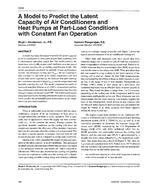The existing fully transverse ventilation systems in the eastbound and westbound Mt. Baker Ridge Tunnels (MBRT) in Seattle, WA were designed before 1993. As a part of a new project, the roadway tunnels are to be reconfigured to increase the number of travel lanes from three to four, increasing the maximum number of vehicles by approximately one third. Consequently, the fire and life safety systems of the tunnels were reevaluated and improved to meet the current requirements.
These systems will be retrofitted to provide a tenable environment for passengers during a fire emergency of flammable liquid cargo in the tunnel with the new fire detection, fire suppression, enhanced activation and upgraded tunnel ventilation systems. This paper demonstrates the ability to effectively retrofit the existing tunnel ventilation system to meet current tenability requirements using a multiple system upgrade approach supported by computational fluid dynamics (CFD) analysis for fire emergency scenarios.
In the westbound tunnel, where vehicles on both sides of a fire may be trapped due to the exit’s close proximity to Downtown Seattle and potential traffic congestion, tenability and safe egress are required on both sides of the fire, which challenges the retrofit of the old transverse ventilation system. This would require the existing exhaust duct in the lid section be divided into two sections, each approximately 1,000 ft (305 m) long, to provide two exhaust ventilation zones in the lid section, and to provide additional means of evacuation through the existing supply air duct. The existing supply and exhaust fans will be upgraded to provide higher pressure by keeping the existing fan housings and replacing fan motors and impellers.
In the eastbound tunnel, where traffic ahead of the fire would expect to leave the tunnel successfully, the existing transverse ventilation scheme will be converted to a longitudinal one by operating jet fans along with the existing ventilation system using modified modes of operation. No changes to the existing ventilation fans are required in order to minimize the impact of construction.
Citation: ASHRAE Papers CD: 2014 ASHRAE Winter Conference, New York, NY
Product Details
- Published:
- 2014
- Number of Pages:
- 8
- File Size:
- 1 file , 3.1 MB
- Product Code(s):
- D-NY-14-C050


